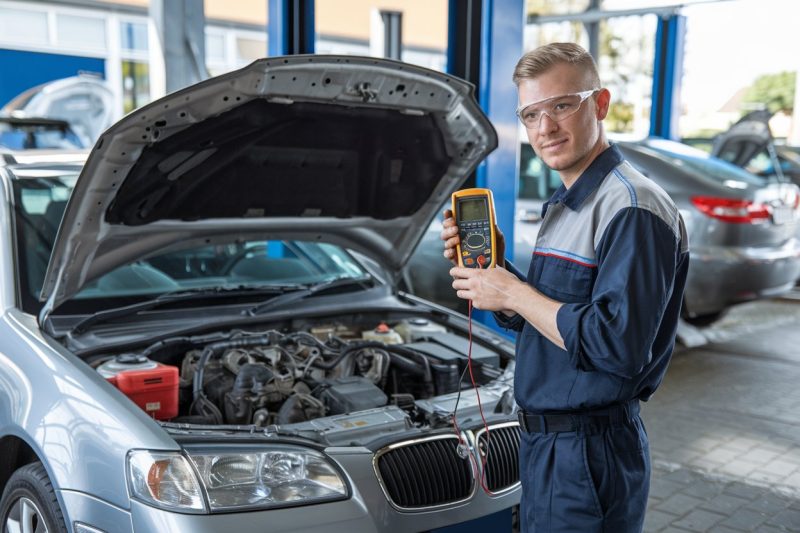Car electrical issues can be highly frustrating and sometimes even alarming, but they are also quite common. Problems with the battery to malfunctioning lights can disrupt your daily routine if not addressed promptly. Identifying and fixing these common issues can save you time and money and keep your vehicle running smoothly.
Many of us depend on our cars for daily transportation, so encountering electrical problems can be a significant hassle. Whether it’s a dead battery that leaves you stranded or a faulty alternator causing your lights to flicker unpredictably, knowing the basics of car electrical systems and how to troubleshoot these problems can be very empowering. With the right knowledge, you can handle many minor issues and get back on the road quickly.
Common Electrical Issues in Cars
Table of Contents
- 1 Common Electrical Issues in Cars
- 2 How to Diagnose Electrical Problems
- 3 DIY Fixes for Electrical Issues
- 4 When to Seek Professional Help
- 5 Frequently Asked Questions
- 6 What are the most common electrical problems in cars?
- 7 How can I diagnose a dead battery?
- 8 What signs indicate an electrical issue in my car?
- 9 How do I check a blown fuse?
- 10 What are the most common electrical problems in cars?
- 11 How do I know if my car has electrical issues?
- 12 What causes a dead battery in a car?
- 13 How can I fix a blown fuse?
One of the most frequent electrical problems in cars is a dead battery. Batteries can fail for various reasons, such as old age, extreme temperatures, or leaving the lights on when the engine is off. A dead battery usually prevents your car from starting, leaving you stranded until you can jump-start it or replace it.
Another common issue is a malfunctioning alternator. The alternator charges the battery while the car runs and powers the electrical system. Signs of a bad alternator can include flickering lights, a dead battery, or electrical accessories that don’t work correctly. A failing alternator means your battery isn’t being charged while driving, eventually leaving you with a dead battery.
Blown fuses are also a common problem. Fuses protect the electrical circuits in your car, and when a fuse blows, it interrupts the power to the affected circuit. This can lead to non-working headlights, dashboard lights, or power windows. While replacing a blown fuse is relatively straightforward, it’s essential to understand why it blew in the first place to prevent it from happening again.
Electrical problems can occur for many reasons, including poor maintenance, exposure to the elements, or wear and tear over time. Corroded connections, damaged wires, and worn-out parts can all contribute to electrical issues. Regular check-ups and prompt attention to minor symptoms can help keep your car’s electrical system in good condition.
How to Diagnose Electrical Problems
Diagnosing electrical problems in your car can be a systematic process. Here’s a step-by-step guide to help you identify the root cause of common electrical issues:
1. Check the Battery: Start by inspecting the battery. Ensure the terminals are clean and securely connected. Test the voltage using a multimeter; a healthy battery should read around 12.6 volts when the car is off and between 13.7 to 14.7 volts when the car is running.
2. Inspect Fuses: Locate the fuse box, usually found under the dashboard or in the engine compartment. Use the diagram on the fuse box cover to identify and check the fuses related to your problem. If a fuse is blown, replace it with one of the same amperage.
3. Test the Alternator: If you suspect the alternator, start the car and test the voltage at the battery terminals with a multimeter. It should read between 13.7 to 14.7 volts. If it’s lower, the alternator might be failing.
4. Look for Corroded or Loose Connections: Inspect the wiring and connectors in the affected areas. Corrosion or loose connections can cause intermittent electrical problems. Clean and tighten any corroded or loose connections you find.
5. Use Diagnostic Tools: Advanced diagnostic tools can help identify more complex issues. An OBD-II scanner can read error codes from your car’s computer, pointing you in the right direction for further inspection.
Tools and techniques for diagnosing electrical problems include using a multimeter to test voltage, continuity, and resistance. A test light can help check for power at various points in the circuit. An OBD-II scanner can also read diagnostic trouble codes from the car’s computer.
Careful and methodical diagnosis can save you time and money by accurately identifying the issue, allowing for the appropriate repair. Regular maintenance and paying attention to warning signs can prevent many electrical problems from escalating into more significant issues.
DIY Fixes for Electrical Issues
Handling minor electrical issues in your car can save you money and downtime. Here are some common fixes that you can attempt yourself:
1. Replacing a Dead Battery: If your battery is old or not holding a charge, replacing it is straightforward. Start by disconnecting the negative terminal, followed by the positive. Remove the battery hold-down clamp and lift out the battery. Place the new battery, reconnect the terminals, starting with the positive, and secure the hold-down clamp.
2. Changing Blown Fuses: A blown fuse is easy to spot, as the metal filament inside the fuse will be broken. Locate the fuse box, remove the blown fuse using a fuse puller or needle-nose pliers, and replace it with a new one of the same amperage. This should restore the function of the affected circuit.
3. Fixing Corroded Terminals: Corrosion on battery terminals can impede proper connection. To clean the terminals, disconnect the battery and use baking soda and water to scrub away the corrosion. Rinse with water and dry thoroughly before reconnecting the terminals.
4. Replacing Headlight Bulbs: Dull or non-functioning headlights may need new bulbs. Open the hood, locate the back of the headlight assembly, and twist out the old bulb. Insert the new bulb without touching the glass, as oil from your fingers can reduce the bulb’s life. Secure the bulb in place and test the headlights.
Performing these simple fixes can solve many minor electrical problems and extend the life of your vehicle’s components. Always ensure safety by disconnecting the battery when working on electrical components and refer to your car’s manual for specific instructions related to your vehicle model.
When to Seek Professional Help
While many electrical issues can be resolved with some DIY effort, certain situations require the expertise of a professional mechanic. If you experience persistent electrical problems that you can’t diagnose or fix, it’s time to seek professional help.
Indicators that you need a professional include recurring issues with the battery or alternator, multiple blown fuses, or electrical problems that affect critical systems like the engine or brakes. A professional diagnosis is necessary if warning lights on your dashboard, such as the check engine light, persist after basic troubleshooting.
Professional mechanics have the training and tools required for accurate diagnostics and repairs. They use advanced diagnostic equipment to pinpoint the exact cause of electrical issues and ensure all related systems function correctly. Fixing complex problems without proper knowledge and tools can lead to misdiagnosis and potentially more significant issues.
Conclusion
Understanding how to identify and fix common electrical issues in your car can significantly improve your vehicle’s reliability and safety. While some problems can be tackled with essential tools and a bit of know-how, others require the expertise of a professional mechanic to ensure accurate diagnosis and repair. Regular maintenance and prompt attention to electrical issues can keep your car running smoothly and prevent bigger problems.
For those moments when a problem is beyond a DIY fix, My Mechanic Joe offers expert auto repair in Woodstock. Our skilled team is ready to help you with any electrical issues your vehicle may have. Schedule an appointment today and get back on the road with confidence.
Frequently Asked Questions
What are the most common electrical problems in cars?
The most common electrical problems in cars include a dead battery, a blown fuse, malfunctioning alternators, and faulty starter motors. Other issues may stem from corroded battery cables, issues with the ignition system, or short circuits in the wiring. Identifying these issues early can prevent more significant problems down the line.
How can I diagnose a dead battery?
To diagnose a dead battery, check if the check engine light or dashboard lights are dim or non-functional. If your car doesn’t start, it could be due to a dead battery. You can jump-start the car or use a multimeter to check the voltage; a healthy car battery should read around 12.6 volts. If it’s significantly lower, you likely need to charge the battery or replace it.
What signs indicate an electrical issue in my car?
Flickering dashboard lights, problems starting the engine, or unusual sounds when turning the key are signs that your car has electrical issues. Other common symptoms may involve non-functioning electrical components such as power windows, radios, or headlights. If you notice any signs that your car may have electrical problems, it’s crucial to investigate further to prevent complete malfunction.
How do I check a blown fuse?
To check for a blown fuse, locate your box, usually found under the dashboard or in the engine compartment. Remove the cover and visually inspect the fuses. A blown fuse will typically have a broken metal strip inside. You can also use a multimeter to test the continuity of the fuse. If the fuse is faulty, replace it with one of the same amperage to restore functionality to the affected electrical component.
What are the most common electrical problems in cars?
The most common electrical problems in cars include a dead battery, blown fuse, malfunctioning alternator, and issues with the starter motor. Other common electrical problems can arise from faulty wiring, corroded battery cables, and failing spark plugs. These issues can manifest through various symptoms such as dim lights, a non-starting engine, or the check engine light illuminating your dashboard. Understanding these common symptoms can help you quickly diagnose the problem.
How do I know if my car has electrical issues?
Signs that your car has electrical issues include dimming or flickering lights, a check engine light on the dashboard, difficulty starting the engine, and unresponsive electronic components like power windows or locks. If your car’s accessories malfunction, it could indicate an underlying electrical problem. Additionally, if you notice a burning smell or see signs of corrosion around your battery terminals, it’s crucial to investigate further.
What causes a dead battery in a car?
A dead battery can result from several factors, including leaving lights on overnight, a malfunctioning alternator that fails to charge the battery, or simply an old battery that can no longer hold a charge. If your car has been sitting unused for an extended period, this can also lead to a dead battery. It’s essential to regularly check the health of your car batteries and ensure that your charging system is functioning correctly.
How can I fix a blown fuse?
First, locate your fuse box to fix a blown fuse, usually found under the dashboard or in the engine compartment. Check the fuse related to the electrical component that isn’t working, and if it appears broken, replace it with a new fuse of the same amperage. However, if the new fuse blows shortly after installation, a more serious electrical issue may be at play, such as a short circuit or faulty wiring.

